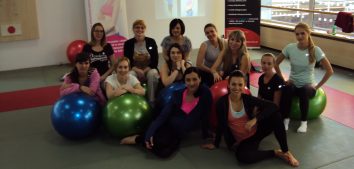
Progress in Strength Training
Strength training (or resistance training) focuses on intensive muscle work using additional loads such as barbells, dumbbells, or resistance bands. You can also strength train using only your own body weight. The benefits of resistance training are versatile: from increasing muscle mass and strength, improving overall fitness and well-being, through a beneficial effect on the cardiovascular system, to strengthening the bones.
However, in order to fully utilize the potential of strength training, you need to know what to do to continuously improve. And that’s exactly what I’d like to tell you about today 🙂
How Often Should You Strength Train?
According to the World Health Organization (WHO) recommendations, adults should do strength training at least twice a week, engaging all major muscle groups. It is emphasized that you can train more often, which provides additional health benefits. Strength training is recommended for all adults (including seniors), as well as children, adapting the type of exercise to their abilities.
Studies show that you can accumulate the time spent on strength training and do it for example only once a week in which case it should simply be longer. The key is the total training volume (the number of repetitions, sets of exercises, and the load used).
How to Break Through a Training Plateau?
When you first start out with strength training, the results can be quick and easy to see. As you gain experience, the rate of progress slows down. This is a natural process, known as a training plateau. To continue to improve, modifications are necessary. The most important principle you must follow is progressive overload.
Progressive Overload
Progressive overload involves gradual increase the intensity of exercise, which may include:
- Increasing the weight/resistance: For example, if you regularly lift a certain weight, as your strength increases, you should add more weight.
- Increasing the number of reps and sets: You can increase the number of reps in each set or the number of sets for a given exercise. For example, instead of doing 3 sets of 10 reps, you can go up to 4 sets of 12 reps.
- Reducing the rest time: By reducing the rest time between sets, you increase the intensity of the workout, which forces the muscles to work harder.
- Changing exercises: Introducing new exercises that engage the muscles in a different way can help you break through plateaus and continue to improve. This rule is especially true if you start with your own body weight. For example, if the classic push-up was previously out of your reach and you were doing push-ups on your knees, after a while it is worth moving on to a more difficult version.
The body gradually adapts to activity and needs new stimuli to enable it to develop further. Training should be enjoyable and at the same time pose a small challenge.
Other Key Aspects of Training
In addition to progressive overload, it is also important to take care of other factors that affect the effectiveness of strength training:
- Nutrition: A diet rich in protein, vitamins and minerals supports muscle recovery and growth. The priority is also an optimal amount of calories to provide the body with energy for intense training.
- Rest and sleep: Recovery is key to muscle growth. Make sure you get enough sleep and rest between intense training sessions.
- Realistic action plan: adjust your training plan to your lifestyle and possibilities. A well-thought-out plan helps you stay motivated.
- Proper technique: You’ve probably heard the statement that strength training can lead to injuries. This is one of the arguments that often makes adults afraid to undertake weight training. Remember that the most important thing is proper technique. Correctly performed exercises will not lead to injuries.
- Monitoring progress: Tracking your progress on a regular basis allows you to assess the effectiveness of your training and adapt it to changing needs. I mean monitoring your skills, strength, body effects, and well-being.
- Regularity: Even the best plan will not be effective without practice. Stick to the plan and try to regularly stimulate the muscles to develop.
When you take into account these principles, you can achieve your training goals and derive satisfaction from your work. I remind you that in the Diet & Training by Ann application HERE we already have over 135 training plans, including strength training. I am still working on even more programs, so stay tuned! 🙂
Bibliography:
- Hughes, D. C., Ellefsen, S., & Baar, K. (2018). Adaptations to endurance and strength training. Cold Spring Harbor Perspectives in Medicine, 8(6), a029769. https://doi.org/10.1101/cshperspect.a029769
- American College of Sports Medicine. (2009). American College of Sports Medicine position stand. Progression models in resistance training for healthy adults. Medicine & Science in Sports & Exercise, 41(3), 687-708. https://doi.org/10.1249/MSS.0b013e3181915670
- Iversen, V. M., Norum, M., Schoenfeld, B. J., & Fimland, M. S. (2021). No time to lift? Designing time-efficient training programs for strength and hypertrophy: A narrative review. Sports Medicine, 51(10), 2079-2095. https://doi.org/10.1007/s40279-021-01490-1
- World Health Organization. (2020). WHO guidelines on physical activity and sedentary behaviour: At a glance. Geneva: World Health Organization. Licence: CC BY-NC-SA 3.0 IGO.










Comments No Comments
Join the discussion…